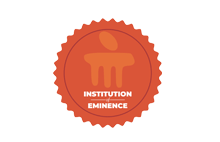An Improved Image Enhancement Technique for Low Light Images Using Deep Learning Approach
Document Type
Article
Publication Title
Journal of Machine and Computing
Abstract
Image enhancement in facial detection is a critical component of facial recognition systems. Face identification in an uncontrolled environment is affected by a multitude of difficulties such as poor light levels, low-resolution cameras, occlusions from surrounding objects, and tiny faces in distant photographs. Low signal-to-noise ratio, low brightness, and noise in low-light photographs lead to issues such as color distortion and poor visibility, which makes it challenging to identify faces. Many techniques to enhance low-light images have been developed, improving the face detection system’s accuracy. This will improve the picture at the expense of higher running costs and lower model robustness. The proposed technique, DCE-Net, uses performance-intensive deep learning and light-enhanced image properties. A non-referential deep learning technique was employed to acquire and modify the image attributes. A set of loss functions designed to perform without ground-truth images is the foundation of the deep network learning employed. Compared to the current referential methods, straightforward non-referential light estimation curve mapping minimizes the computational demand for low-light image improvement. Several experiments conducted on standard datasets demonstrated the efficacy and reduced computational requirements of the approach. The effectiveness of this method is supported by both the qualitative and quantitative outcomes. The PSNR and SSIM computation for paired images shows promising results using the proposed image enhancement technique.
First Page
627
Last Page
637
DOI
10.53759/7669/jmc202404060
Publication Date
7-1-2024
Recommended Citation
Gopakumar, Rajesh and Kotegar, Karunakar A., "An Improved Image Enhancement Technique for Low Light Images Using Deep Learning Approach" (2024). Open Access archive. 10288.
https://impressions.manipal.edu/open-access-archive/10288


